by Elizabeth Fulton
Animal Wellness magazine, August/September 2005, Volume 7, Issue 4, p. 89-91.
As animal communication becomes more widely known and accepted within our culture, a growing number of people are interested in learning how they can talk to their four-footed companions. One effective way to open the intuitive channels necessary for animal communication is through the ancient healing art of Reiki. Like acupuncture, homeopathy, Qi Gong and flower essences, Reiki is part of the emerging field of energy healing, an ancient practice that is being rediscovered for use in modern times. If you look into the backgrounds of many professional animal communicators, you will often find they are also Reiki practitioners, and the two skills are frequently practiced hand in hand.
The following story describes my introduction to animal communication through my Reiki practice. At the time, I had been healing animals with Reiki for about a year, but this was the first time I was aware that I was communicating easily and naturally with a member of another species.
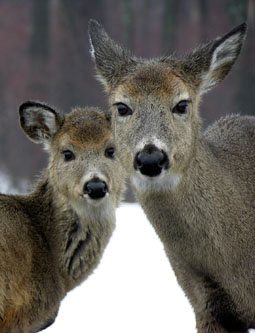 A doe at the door
A doe at the door
Early one morning, my husband burst into the bedroom, astonished and upset. He said that each time he tried to take our dog out for a walk, he was charged by a doe outside our front door. Unbelieving, I went to the window and looked out. Indeed, there was a very agitated-looking doe standing just outside the door, eyes wide, nostrils flaring, breathing rapidly.
As I looked at her, the word “baby” formed in my mind. At first I thought she was pregnant and about to give birth. I told her it was all right, that no one would hurt or disturb her, and that she was safe. As I spoke, she visibly relaxed, and the thought that the baby had already been born came into my mind, with a very blurry image of a small, curled-up being. I looked around our yard and saw a fawn, still covered with amniotic fluid, lying curled up in the wood chips a short distance away. I realized that these ideas and images had come from the doe, and was incredibly excited by this brief exchange with such a glorious creature. We left the doe and her fawn undisturbed, and my husband and our dog left by the back door.
The next morning, I ventured outside to see if I could have another encounter with the doe. I roamed the area near our house, sometimes calling out softly to the doe, sometimes calling her internally. After a while I gave up, but as I turned abruptly back onto the sidewalk, I almost knocked the doe over. She had heard me and was standing right behind me! We gave each other a tremendous scare, and she leaped to the other side of the street. We stood looking at each other for a long time. No words or images passed between us, but a gentle, vibrant energy connected us and feelings of love passed back and forth along this connection. I felt that both of us were re-evaluating our ideas about inter-species relationships, and a bond was being forged between us.
Deepen your intuitive communication with Reiki
Animal communication, or telepathic communication, can also be described as deepened intuition. All of us have intuitive capabilities, and these can be deepened and expanded to become telepathic communication. Two of the biggest obstacles many people face when developing their telepathic skills are learning to access the energetic or intuitive “frequency” of animal communication, and putting aside their preconceptions about animals so they can “hear” what the animals have to say. People who meditate are already able to enter the quiet inner state where animal communication can take place. For others, Reiki training and practice is an effective way to begin to access that inner space. For many Reiki practitioners, finding the “frequency” at which animals communicate evolves as an integral part of giving treatments.
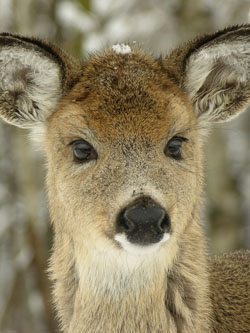 The Reiki practitioner is naturally drawn inward as part of the treatment, and her mind quiets in a way similar to meditation. By letting her mind remain still and unattached, the practitioner allows the animals the space and opportunity to be heard. What the practitioner hears will be different for each animal since, like people, they each have an individual communication style. Some communicate more often through visual images while others use feelings, sensations, thoughts, or ideas. Many communications will combine several of these aspects.
The Reiki practitioner is naturally drawn inward as part of the treatment, and her mind quiets in a way similar to meditation. By letting her mind remain still and unattached, the practitioner allows the animals the space and opportunity to be heard. What the practitioner hears will be different for each animal since, like people, they each have an individual communication style. Some communicate more often through visual images while others use feelings, sensations, thoughts, or ideas. Many communications will combine several of these aspects.
In addition to accessing a quiet inner space, the successful use of both Reiki and animal communication involves learning a new “language” of energy. In the process of learning and using Reiki, people begin to feel subtle physical sensations of energy in their hands or bodies and then to perceive subtle phenomena on other levels as well. They find that visual images, feelings and thoughts arise in their consciousness during a Reiki treatment, and gradually they understand that these images, feelings and thoughts often are not their own but come from the being they are treating. If people develop this awareness, it can become full-fledged telepathic communication.
My relationship with the doe has grown and deepened over time and has led to relationships with other deer in the area. They have become my friends and guides in developing my intuitive communication skills and in deepening my understanding of animals and healing. Both the deer and other animals have demonstrated to me again and again that the assumptions we make about them are erroneous, and that animals are far more similar to us than most of us think.
The rewards of animal communication
The culture of animals differs from ours, and their communication is more exclusively telepathic. But, in so many ways, their intelligence, emotions, and spiritual lives are similar to our own. If we put aside our preconceptions about the intelligence of animals and what they are capable of feeling and communicating, they are freed to share with us.
Communicating intimately with animals is immensely rewarding and exciting. Their insights reveal a beauty, depth and generosity far beyond what most humans are conditioned to believe is possible. People who learn to use Reiki with animals find that many animals that are right for their unique paths come forward to guide them. Through learning and practicing Reiki, your intuition and sensitivity to subtle, energetic phenomena can be heightened and refined, along with your ability to rest inwardly so the voices of animals can be heard. Reiki and animal communication are natural allies, each contributing to the other to bring deep healing and to strengthen the bond between animals and humans.
What is Reiki?
The word “Reiki” (pronounced Ray-key ) is Japanese and is usually translated as “universal life energy.” It is a gentle yet powerful energy healing method that treats the whole individual, not just the symptoms of a disease. The practitioner acts as a conduit for the healing energy of the universe to flow through her hands to the animal or human client, causing a shift towards health at the deepest levels. It restores balance and harmony to the patient’s entire being: physical, mental, emotional and spiritual. Reiki is also a powerful tool for personal growth and transformation. Until recently, Reiki healing was available only to humans, but increasing numbers of practitioners are establishing practices devoted exclusively to animals.
Elizabeth Fulton is a Reiki master and professional animal communicator. She offers a combination of Reiki healing, animal communication, and flower essences to all species of animals and their human companions, and teaches people how to heal animals with Reiki.
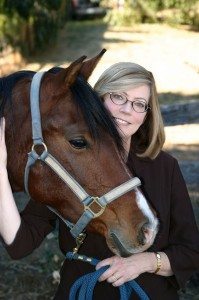 Some years ago I had been thinking about getting some photos of my horses for my website when I saw a sign-up sheet at their barn for a photographer who was coming to do portraits of people and their horses. I jumped at the chance to get some professional shots of my two beauties. The day before the appointment I sent Reiki to the shoot the next day; I asked Senedad and Annie to help me by being at their best for the photos the next day so that their photos could be a part of my work.
Some years ago I had been thinking about getting some photos of my horses for my website when I saw a sign-up sheet at their barn for a photographer who was coming to do portraits of people and their horses. I jumped at the chance to get some professional shots of my two beauties. The day before the appointment I sent Reiki to the shoot the next day; I asked Senedad and Annie to help me by being at their best for the photos the next day so that their photos could be a part of my work.

 The time around an animal’s transition can be a period of greater closeness for the animal and his person as well as a time of growth and transformation; for this reason working with people and their animals during this period is very rewarding. Animal communication, Reiki, and flower essences help people and their animals to be able to move through an animal’s transition with greater ease and peace.
The time around an animal’s transition can be a period of greater closeness for the animal and his person as well as a time of growth and transformation; for this reason working with people and their animals during this period is very rewarding. Animal communication, Reiki, and flower essences help people and their animals to be able to move through an animal’s transition with greater ease and peace.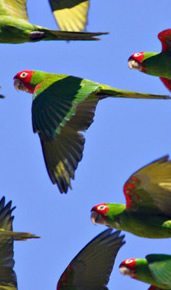


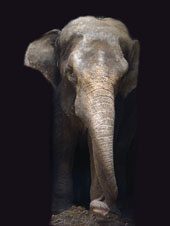
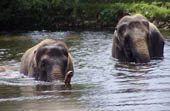
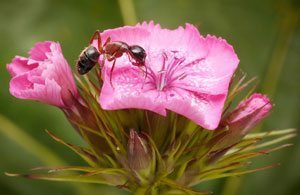 One day, as I was turning on the garbage disposal, I saw an ant out of the corner of my eye just as I flipped the switch. I did not want to harm him but saw him too late, and he was caught in the swirling water in the sink as it went down the drain. I grabbed a small lid and tried to save him, but, although I prevented him from going down the drain, he had been swirling under the water for quite awhile and emerged twisted and crumpled on the side of the lid, where he remained motionless. Still, something told me he could survive, so I cupped my hand over the lid and sent Reiki.
One day, as I was turning on the garbage disposal, I saw an ant out of the corner of my eye just as I flipped the switch. I did not want to harm him but saw him too late, and he was caught in the swirling water in the sink as it went down the drain. I grabbed a small lid and tried to save him, but, although I prevented him from going down the drain, he had been swirling under the water for quite awhile and emerged twisted and crumpled on the side of the lid, where he remained motionless. Still, something told me he could survive, so I cupped my hand over the lid and sent Reiki.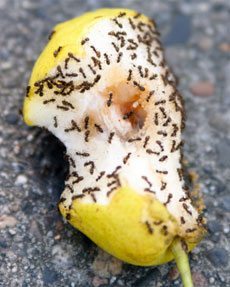 I have used Reiki in our household in one practical way that has been appreciated by our whole family. Several times last year the ants in our area came inside looking for food. We would come into the kitchen in the morning and find overwhelming numbers scavenging everywhere. We had never experienced much difficulty with ants and certainly not in such tremendous numbers.
I have used Reiki in our household in one practical way that has been appreciated by our whole family. Several times last year the ants in our area came inside looking for food. We would come into the kitchen in the morning and find overwhelming numbers scavenging everywhere. We had never experienced much difficulty with ants and certainly not in such tremendous numbers.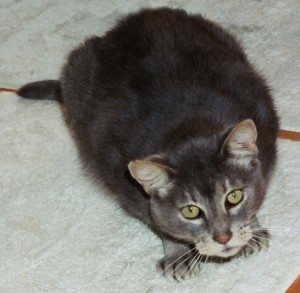 One day when I asked the staff at the local shelter which cat needed Reiki, they immediately led me to a twelve-year-old Russian Blue cat, Smokey. He was feral and had been brought in three months earlier by a woman who had been feeding him for quite a while. She was moving and feared there would be no one to feed Smokey.
One day when I asked the staff at the local shelter which cat needed Reiki, they immediately led me to a twelve-year-old Russian Blue cat, Smokey. He was feral and had been brought in three months earlier by a woman who had been feeding him for quite a while. She was moving and feared there would be no one to feed Smokey.